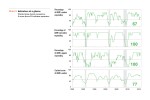Economy
Demographic trends may dampen demand for single-family homes
Owning a home has been held up as a key part of the American dream. From 1994 through 2005, home ownership in the U.S. rose from just under 64 percent to over 69 percent, a huge jump for a country of over 300 million people. However, during the great housing boom, many homeowners became overextended and home prices rose too quickly. The subsequent housing bust devastated many individual balance sheets and wreaked havoc on the financial system.
As a result, the goal of owning a home has receded. Home ownership rates have fallen to below 64 percent. A weak economic recovery with slow job growth
and anemic wage gains contributed to the decline, along with slowly declining unemployment and tougher lending standards. For younger Americans, the appeal of home ownership has weakened.
Meanwhile, in 2011 the leading edge of the baby-boom generation began turning 65. For both the under-35 and the over-65 crowds, home ownership rates have declined substantially. For the over-65s, the proportion that owns a home fell to 78.5 percent in the second quarter of 2015 from 81.5 percent in 2012. For under- 35s, just 34.8 percent owned a home this year, down from 43.6 percent in 2004.
These shifts are likely one of the main drivers for the relative weakness in new home construction. Since the end of the Great Recession, the multifamily housing market—particularly apartment buildings—has recovered more robustly than the single-family home market. While construction starts of new single-family homes have barely reached early 1980 levels, new multifamily housing starts are above the levels that prevailed throughout the housing boom (Chart 2).
With many years of boomers turning 65 still ahead and potentially selling their homes, there’s a reasonable likelihood that the single-family home prices nationwide will be restrained for some time. The critical element may be the extent to which younger generations pursue their parents’ dream of home ownership.
Economic Outlook
The proportion of AIER’s Business-Cycle Conditions (https://www.aier.org/BCM) leading indicators deemed to be expanding was 67 percent in September, up slightly from 64 in August. This marks the fifth consecutive month with the index in the mid-60s range and follows three months at the neutral 50 percent level. Each month AIER calculates the percentage of its Twelve Primary Leading Indicators that are judged to be cyclically expanding. A reading above 50 indicates that continued expansion is likely.
In our latest evaluation two thirds of our leading indicators were trending higher, marking the 73rd consecutive month at or above 50 percent. Consistent readings above the midpoint suggest a low probability of recession over the next six to 12 months. Before we draw conclusions we look for confirmation from our cyclical score of Leaders. For September that score was 77, little changed from the previous reading of 78. We conclude that the probability of a recession occurring in the next six to 12 months remains low.
The percentage of coincident indicators appraised as expanding remained at 100 in September. Four out of six coincident indicators were trending upward, while the remaining two are indeterminate. With the return to a 100 percent score after an interruption of only three months, we have further evidence that the business-cycle expansion is continuing. Among our six coincident indicators, three hit new cycle highs.
The proportion of lagging indicators judged to be expanding also remained at a perfect 100 reading in September. Two of the six indicators reached new cycle highs, while two were indeterminate. Overall, the percentage expanding and the cyclical score for our leading indicators suggest an expanding economy and low probability of recession (Chart 3).
Click for interactive Indicators at a Glance (on mobile device turn to landscape)



